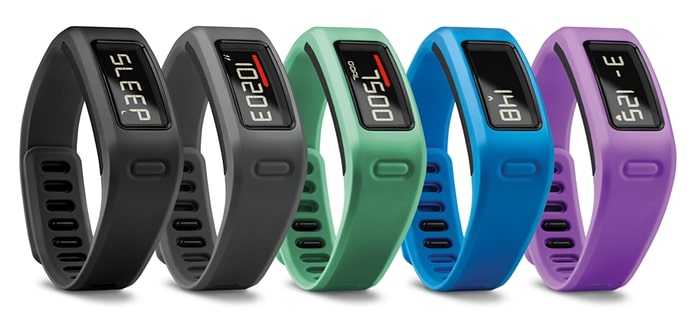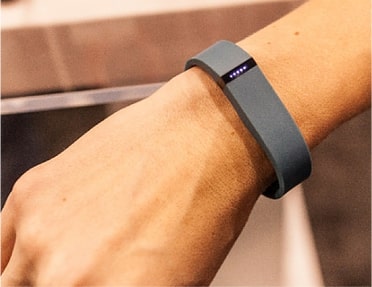Technology is often blamed for the decreased activity levels of Australians. But what if technology could help INCREASE health and fitness?
This quarter Josh has been out testing the popular new trend in fitness – the fitness tracker.

Garmin VivoFit
The Garmin VivoFit can be purchased for a cool $100 at most health/sports/tech stores. Garmin have been making GPS devices for many years now and have created an item with the general public in mind. It tracks all your normal activity and has the ability to set daily targets.
Like the new activity trackers it can also track your quality of sleep and heart rate (but you need to buy a compatible HR monitor at an additional cost).
It has a durable rubber band able to withstand the harsh conditions of the regular gym junkie or outdoor explorer. The battery life is remarkable being able to last up to a year with replacement, although due to the power saving the backlight is dim and very hard to see in poor light.
It also has apps to log onto their Garmin community where you can share data with other likeminded individuals (available on iOS and Android).

FitBit Flex
The FitBit Flex activity tracker typically goes for $95 or you can get the Fitbit Charge HR tracker (built in heart rate monitor) for $200.
The Fitbit is very similar to the VivoFit with the activity/sleep monitor, Apps and updates.
One of the major issues is the absence of a screen so you can’t see any data until you synch it (A note: the higher model FitBit CHARGE does have a screen but for a greater cost).
The Fitbit however does have a silent alarm which alerts the wearer when targets have not been met a feature missing in the Garmin VivoFit.
Last Points
A downside of the Vivofit is that it requires manual syncing and can only store 2-3 weeks of data however as mentioned earlier the VivoFit has a watch-like battery life and doesn’t require daily charging like the FitBit – a factor worth keeping in mind for anyone prone to forgetting to charge and put back on their device.
The VivoFit is hardier than the FitBit (50m water resistance v 10m), great for swimmers and lover of water sports, however in my opinion the ‘feel’ of the VivoFit was more ‘plastic than the Fitbit which felt softer and easier to wear.
Both items do satisfy their task, which is to monitor activity. There are number small differences between them and ultimately it will come down to user preference.
These are only two of many activity trackers to hit the market, so do some research and find with best suits you. Remember you can spend heaps of money on gadgets but at the end of the day hard work is all that matters.
Activate Physiotherapy’s Physiotherapist and Exercise Physiologists can provide you with a tailored exercise program to achieve your health and fitness goals.
Call us today or book an appointment online!

